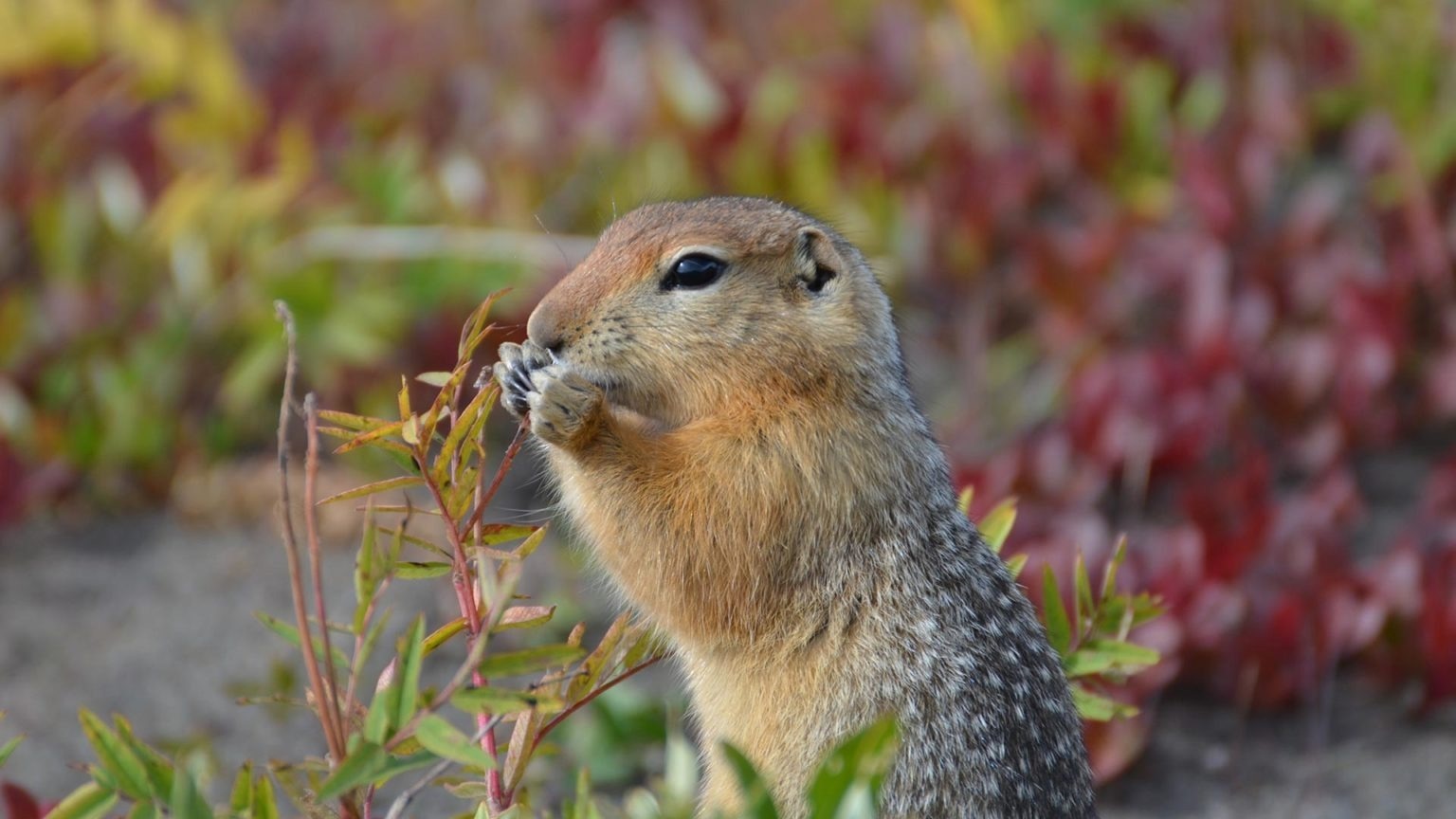Among mammals, Arctic ground squirrels are unique. Their capacity to prevent themselves from freezing even while body temperatures go less than that level on the thermometer facilitates them to endure adverse winter climates. A novel study was reported in Science. It examines over a quarter of a century of biological and climate data.
 A juvenile arctic ground squirrel foraging near Toolik Field Station in northern Alaska. Image Credit: Cory Williams
A juvenile arctic ground squirrel foraging near Toolik Field Station in northern Alaska. Image Credit: Cory Williams
The results comprise shorter hibernation durations and differences between female and male hibernation periods. Spoiler alert—the girls “rise and shine” a little sooner with regard to warming, which could have either positive or negative ripple effects across the complete food web in such ecosystems.
Cory Williams, Senior Author and Assistant Professor in the Department of Biology at Colorado State University, started examining arctic ground squirrels when he was at the University of Alaska Fairbanks over 15 years ago.
I think the thing that makes our study unique is that we are looking at a long enough dataset to show the impacts of climate change on a mammal in the Arctic. We can show a direct link between changes in temperature and the physiology and ecology of these animals.
Cory Williams, Senior Author and Assistant Professor, Department of Biology, Colorado State University
Lead Author for this new study, Helen Chmura, began the investigation when she was a postdoctoral fellow at the University of Alaska Fairbanks in 2018. She now works as a USDA Forest Service researcher with the Rocky Mountain Research Station.
Our data show that the active layer, the soil layer above the permafrost, freezes later in the fall, doesn’t get as cold in the middle of winter, and thaws slightly earlier in the spring. These changes, amounting to about a 10-day reduction of the time soil is frozen at a meter deep, have occurred over just 25 years, which is fairly rapid.
Helen Chmura, Study Lead Author, Rocky Mountain Research Station
Adverse Alaska winters are endured by Arctic ground squirrels by hibernating for more than six months in a year, extremely slowing their heart, lungs, body, and brain functions. Still, they must use energy to produce sufficient heat from accumulated fat to prevent tissues from freezing. They resurface from their burrows that are over 3 feet below the ground every spring, starving and keen on mating.
Soil and Temperature Data
Chmura and Williams, as well as the co-authors, examined long-term soil and air temperature data at two sites in Arctic Alaska together with data gathered with the use of biologgers. They quantified the skin and/or abdominal temperature of 199 free-living individual ground squirrels throughout the same 25-year period. They discovered that females are getting changes when they complete hibernation, emerging sooner each year in comparison to males.
Modifications in females correspond to an earlier spring thaw. The benefit of this occurrence is that they do not require to spend as much accumulated fat at the time of hibernation and can start foraging for shoots and roots, seeds and berries earlier in the spring. Researchers think this could result in higher survival rates and healthier litters.
The drawback is that if the males also do not alter hibernation patterns, ultimately, there could be a mismatch in existing “date nights” for the females and males. Also, ground squirrels are an essential source of food for several predators, such as wolves, foxes, and eagles. Higher exposure and threat of being eaten is an indirect consequence of being active over the ground for a longer duration.
No Clear Winners and Losers
A big mystery is what will happen to the population—there are no obvious losers or winners. Although hibernation needs minimal energy, which could aid in enduring overwinter survival, ground squirrel numbers also rely on the way the predators react to climate alterations. For now, Williams states, “Our paper shows the importance of long-term datasets in understanding how ecosystems are responding to climate change.” Chmura approved, adding, “It takes a great team to continue a dataset like this for 25 years, especially in the Arctic.”
Other contributing authors are Brian Barnes, University of Alaska Fairbanks, and Loren Buck from Northern Arizona University, who both started this research in the 1990s to study how Arctic ground squirrels endure such long, dark, cold winters and simply how cold their hibernation spots were.
These questions encouraged them to install the first soil temperature monitors, and as technology advanced, they could quantify those temperatures throughout the whole winter. Cassandra Duncan and Grace Burrell helped with the study while being students at the University of Alaska Fairbanks.
Journal Reference:
Chemura, H., et al. (2023) Climate change is altering the physiology and phenology of an arctic hibernator. Science. https://doi.org/10.1126/science.adf5341.